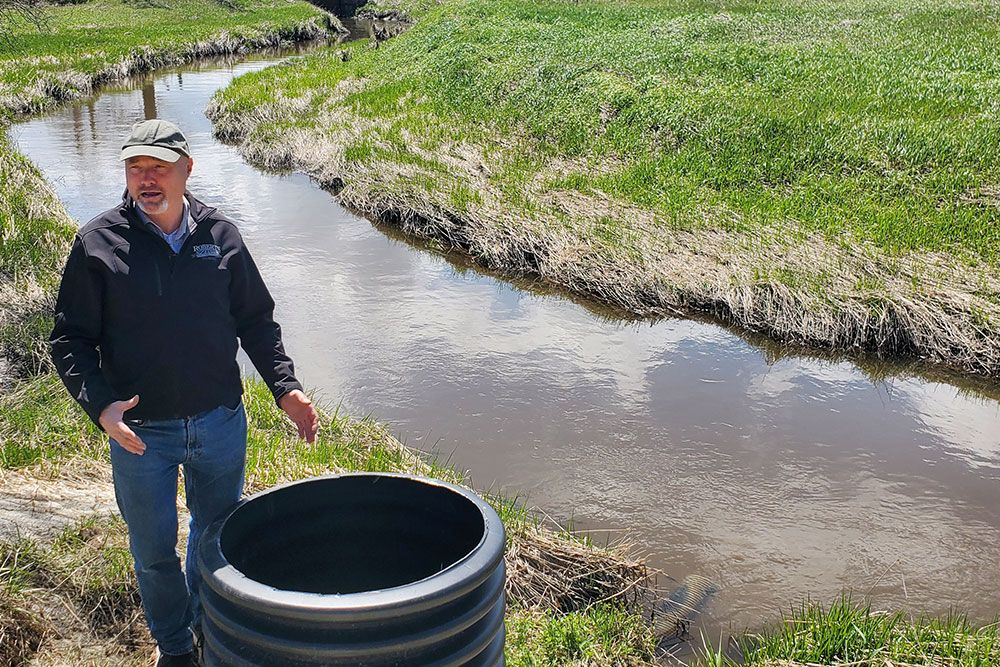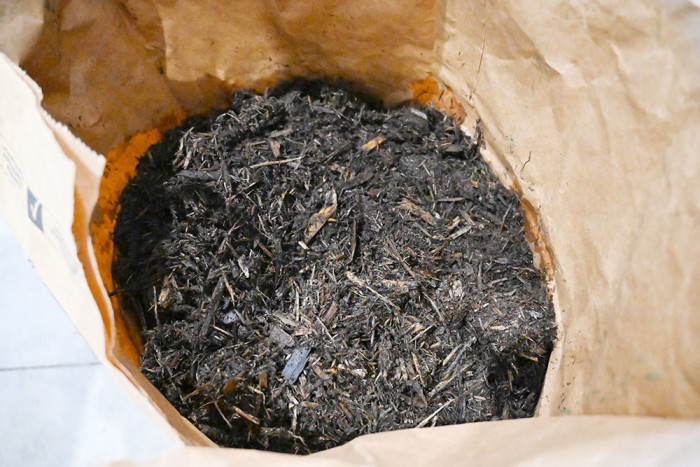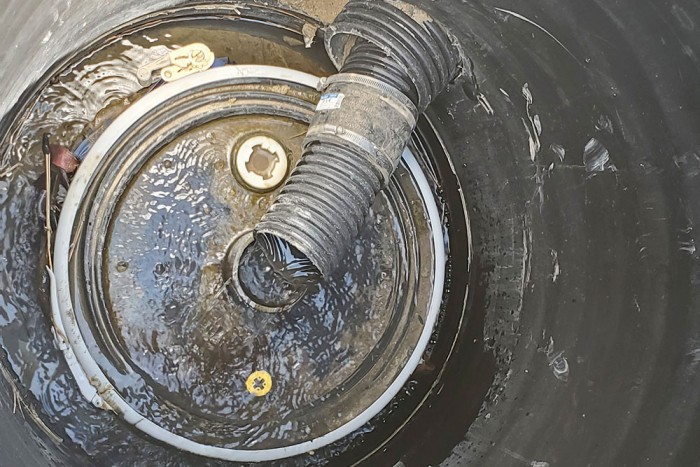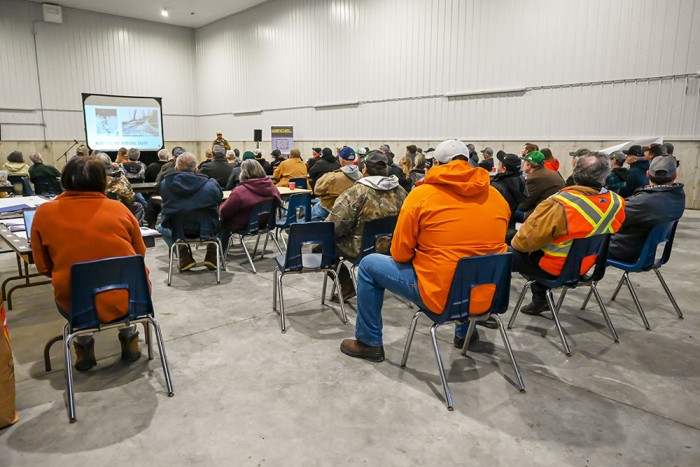Managing water and nutrients on Bruce Peninsula

By Mel Luymes
At the end of March 2023, farmers and landowners in the Northern Bruce Peninsula (NBP) met to discuss municipal drains as well as new opportunities for water management. As more grain farmers are buying pastureland on the Peninsula, there are plenty of tile drains being installed and an increasing need for outletting.
Organized by the Bruce Peninsula Biosphere Association (BPBA), the event also highlighted some of the work that the BPBA has been doing on phosphorus reduction structures.
The day began with Stephen Cobean, P. Eng, the drainage superintendent in NBP, who outlined the Drainage Act and a history of drains and watercourses in the area.
Next, Brent Weigel, of Weigel Drainage, presented on how drainage tile is installed and why it works to increase yields, followed by Mel Luymes of Headlands Ag-Enviro who outlined an environmental trade-off of tile drainage, namely the transport of phosphorus and nitrogen to watercourses. She went on to discuss several innovative ways that water can be treated within the drainage system itself. As nutrient loading is a function of both concentration and flow, there are ways to reduce concentrations through slag filters that reduce phosphorus or woodchip bioreactors that reduce nitrogen, and there are ways to reduce the flow through underground control gates or wetland and ponds for drainage water recycling.
After lunch, that was served up by Bear Tracks Inn and Restaurant, John Rodgers outlined the BPBA’s work on phosphorus treatment. Rodgers is BPBA’s research coordinator and has partnered with Dr. Bulent Mutus from the University of Windsor to do research into phosphorus removal media on his farm near Lion’s Head.
Rodgers and Mutus have researched tomato plant roots in the past and are now having success with an iron chloride dried on cedar bark. They have tested both high and low concentrations of phosphorus in water, through both passively drained filters and actively pumped filters. The project involved developing the P sorbent media (carboxymethylcellulose – iron) at a larger scale and testing it in the field. As well, they have designed and tested a controlled drainage structure that could be automatically triggered by remote sensors in other parts of the watershed through Internet of Things (IoT) technology.
This research was funded by Agriculture and Agri-food Canada’s Agri-Science program and also by the Canadian Agricultural Partnership through the Ontario Agri-food Research Initiative administered by Bioenterprise. BPBA is also developing a series of short videos that outline the importance and opportunities of managing water and nutrients within agricultural drainage systems.

This photo shows a bag of the media (carboxymethylcellulose–iron) dried on Cedar bark.
 This photos looks down into the structure at the top of the cartridge with media in it.
This photos looks down into the structure at the top of the cartridge with media in it.

Almost one hundred people attended Bruce Peninsula Biosphere Association's drainage day event on March 29, 2023 in Bill Cesar's shed.
